It was the second-deadliest plane crash in Texas history but today is largely forgotten
On May 3, 1968, Braniff Flight 352 crashed in the town of Dawson, about 80 miles southeast of Fort Worth. All 85 passengers and crew aboard the aircraft died, making it at the time the deadliest airplane crash in Texas history.
This grim record held true until August 2, 1985, when Delta Flight 191 crashed at DFW airport, killing 136 and injuring 25. While the Delta crash has been memorialized in several documentaries and dramatizations, the tragedy of Braniff Flight 352 seems to have been largely forgotten.
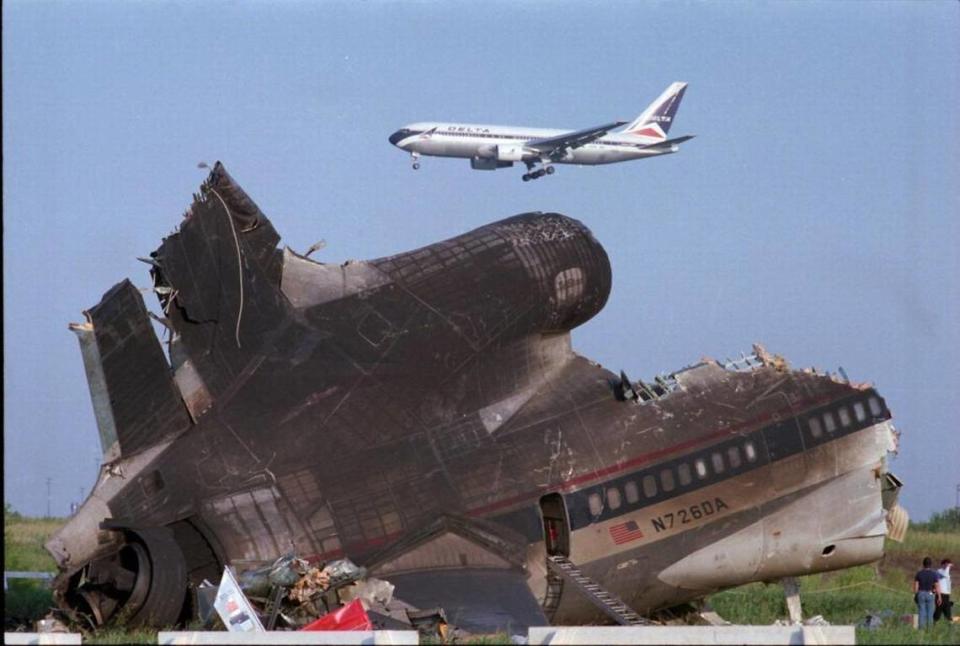
Braniff Flight 352 was a regularly scheduled commuter flight that had left Houston’s Hobby Airport at 4:11 PM local time, headed to Dallas with later stops scheduled in Oklahoma, Arkansas, and Tennessee.
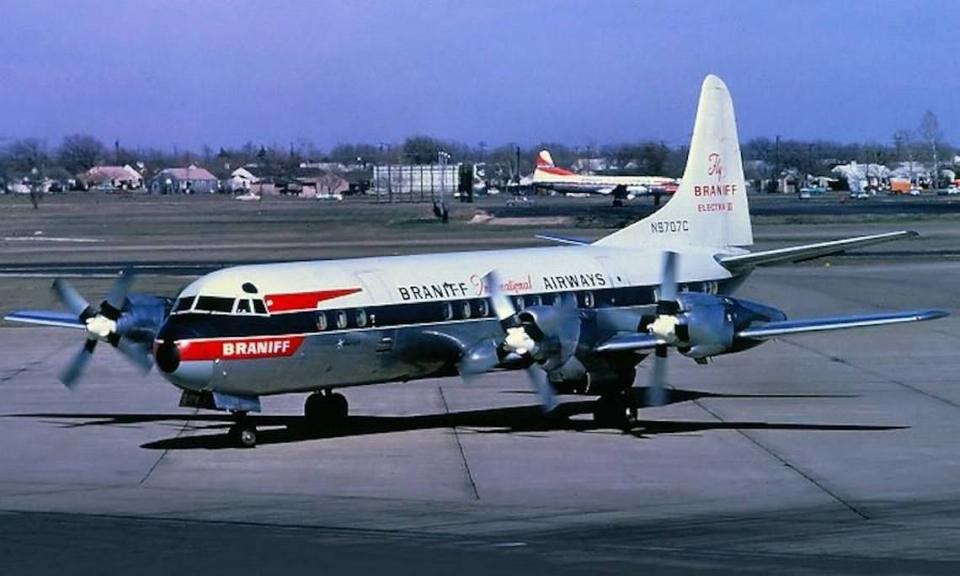
The flight had an experienced three-person cockpit crew including Capt. John Phillips, First Officer John Foster, and a flight engineer, Donald Crossland. The aircraft was a four-engine Lockheed Electra L-188, one of the last large turboprop airliners made before jet airliners became commonplace.
At 4:35 p.m., about 25 minutes into Braniff 352’s flight, the airplane had reached its cruising altitude of 20,000 feet when the crew saw a thunderstorm on their on-board weather radar about 60 miles in front of them. The captain of the flight told the first officer to request air traffic control for a deviation to the west, a course that they believed would avoid the worst part of the storm.
Glenn Wilson was the air traffic controller handling the flight in Fort Worth. He had been monitoring the line of storms on his radar as it moved in from the northwest and was directing other aircraft away from it toward the east, which he saw presented a more clear flight path to Dallas.
He therefore replied, “suggest deviation east of course, the [other] aircraft are deviating that, that way at the present time,” according to a transcript of cockpit voice recordings in an accident report prepared by the National Transportation Safety Board (NTSB).
Looking at his radar, Capt. Phillips told his first officer, “it looks like there’s a hole up ahead to me.” Foster replied, “yeah,” and then told the controller, “On our scope here it looks like to the … uh … a little just a little bit to the west would do us real fine.” Airline pilots are ultimately responsible for the safety of their aircraft, and with the controller having no valid traffic reason to deny the request, he granted 352 permission to deviate west.
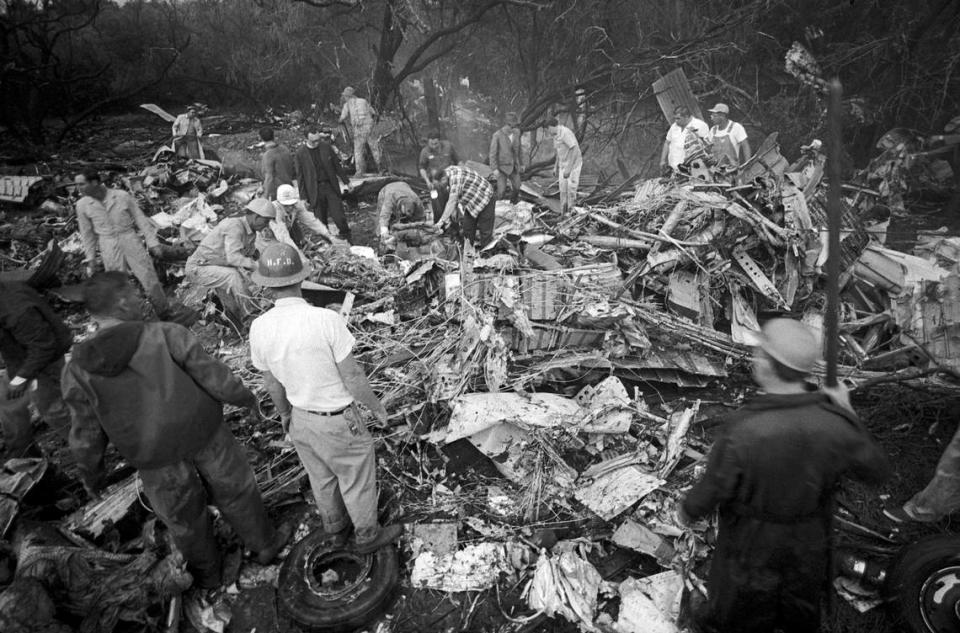
At 4:46 p.m. Flight 352 had almost reached the edge of the storm clouds and Capt. Phillips directed his first officer to ask the controller if there were any reports of hail in the area. “No,” the controller responded, “you’re the closest one that’s ever come to it yet. I haven’t been able to … well I haven’t tried really to get anybody to go through it, they’ve all deviated around to the east.” Capt. Phillips told his first officer, “No, don’t talk to him too much. I’m hearing his conversation on this. He’s trying to get us to admit we’re makin’ a big mistake coming through here.”
At 4:47 p.m., witnesses on the ground reported seeing the plane approach a bank of dark, black-green clouds that had a “rolling or boiling motion at the leading edge.” As the plane was buffeted by the storm’s turbulence, alarms began to go off in the cockpit. The captain told his first officer, “Let’s make a one-eighty,” [that is, a 180 degree turn] and immediately put the plane in a hard right turn in an attempt to head directly out of the storm the same way they had come in.
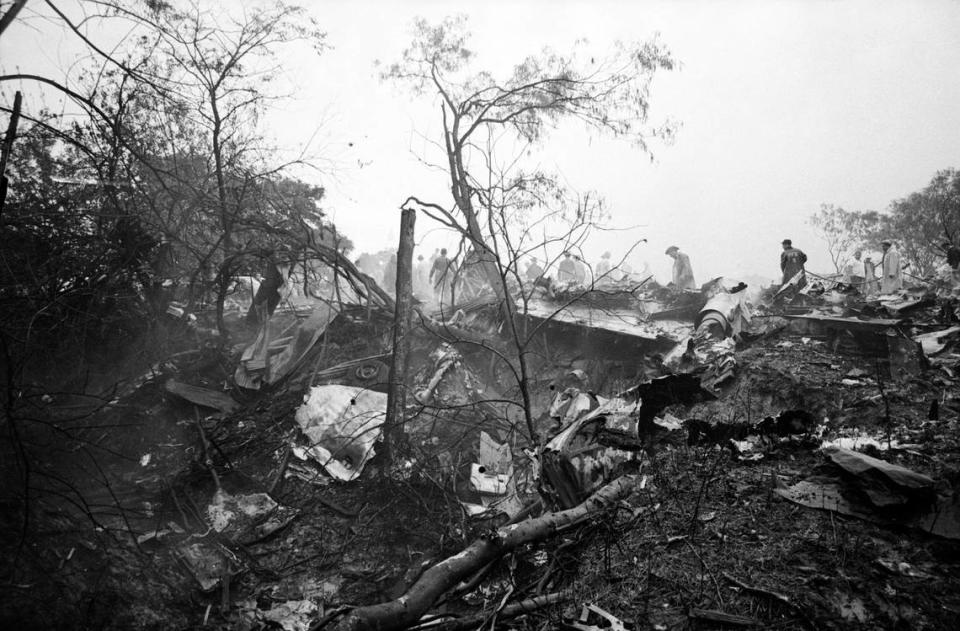
Investigators later speculated that strong wind gusts caused the aircraft to suddenly roll to the right and dive toward the ground. The captain tried to recover from the spiraling dive, but when he pulled up it placed too much stress on the plane’s right wing. First the tip snapped off, followed by the rest of the wing. As the plane tumbled down, it broke apart and crashed in multiple pieces in the town of Dawson, narrowly missing some farm buildings on the ground.
Though unprepared for the tragedy which fell upon them so unexpectedly, the people of Dawson and the surrounding communities nevertheless dutifully pursued the gruesome but necessary task of gathering the bodies, few of which were intact after the impact.
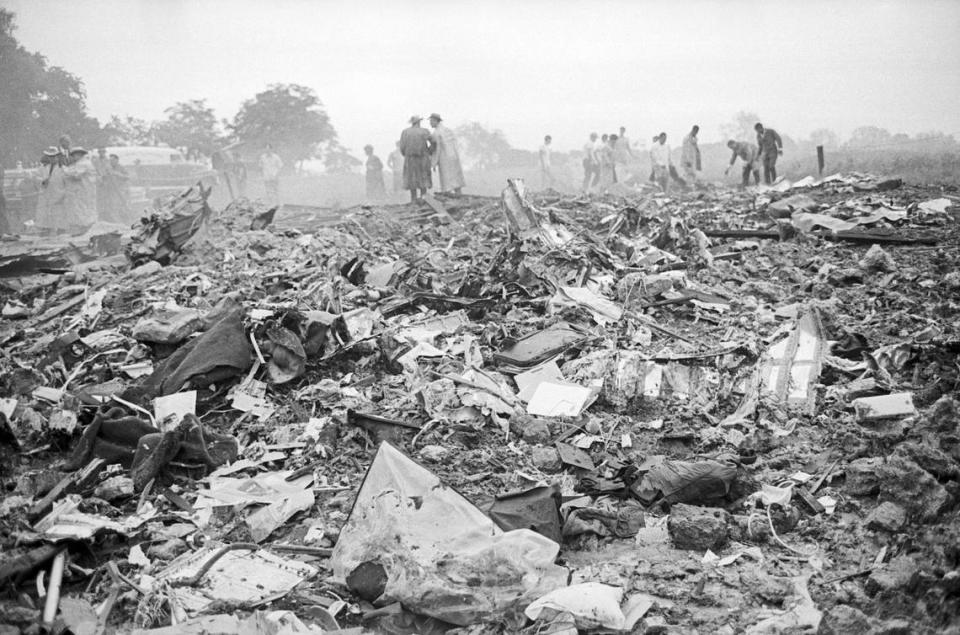
The largest air-conditioned structure in the town was the gymnasium, which was turned into a temporary morgue. The bodies were wrapped in white sheets and lined up on the floor in rows. Only after a body was identified by a Department of Public Safety forensic team were the remains removed from the gym and taken to the funeral home across the street.
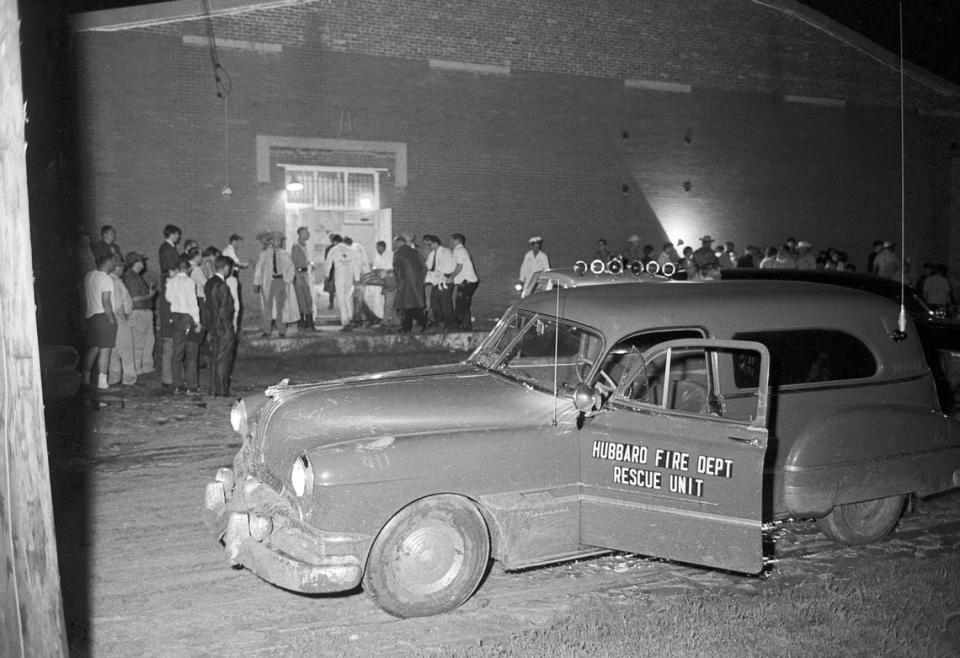
The NTSB did a thorough investigation and concluded that the crash was caused by “the stressing of the aircraft structure beyond its ultimate strength during an attempted recovery from an unusual attitude induced by turbulence associated with thunderstorm. The operation in the turbulence resulted from a decision to penetrate an area of known severe weather.”
The investigators further noted that the fact that other aircraft had deviated east instead of west, along with “repeated comments from the controller regarding deviations to the east, should have been sufficient reason for the captain of Flight 352 to reconsider his decision to penetrate the weather area.”
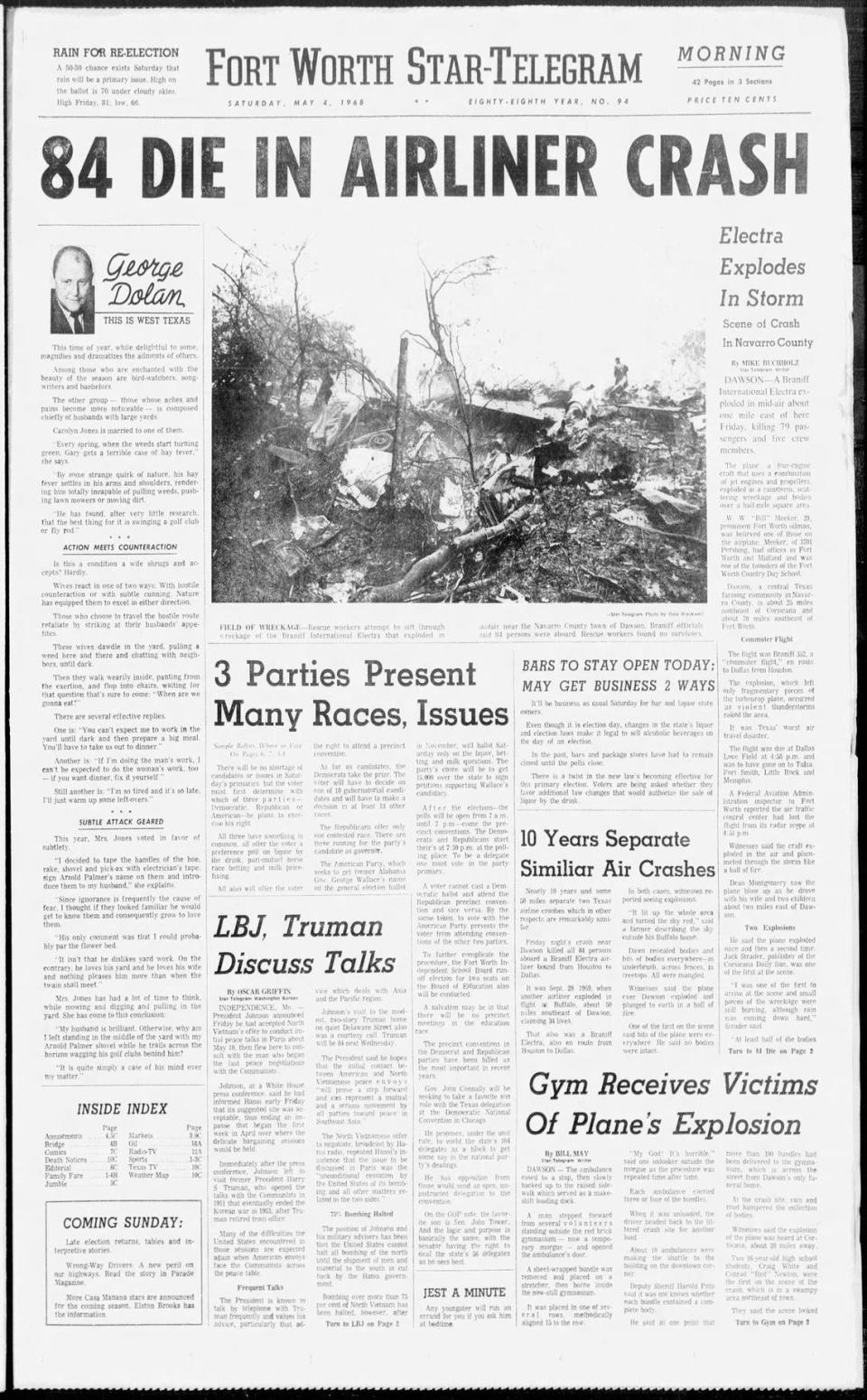
The crash of Braniff Flight 352 was a major news story at the time, gaining front-page headlines across the country. Initial reports indicated that 84 people died, but that was later updated to 85.
In the past 55 years, the event has faded to obscurity except in Navarro County, which contains the town of Dawson and the city of Corsicana, which were the communities most affected by the tragedy.
In 2022, a state historical marker was finally placed on the site of the crash, which is scheduled to be dedicated at 2 p.m. on April 29, 2023. This dedication will hopefully help preserve the memory of this important and tragic part of Texas history.
David Wilson lives in Plano. He is a writer, historian, and works in the creative department at Mary Kay Inc. David’s father was Glenn Wilson, the air traffic controller mentioned in the column. For a more in-depth look at the story of Braniff 352, visit The Crash of Braniff Flight 352: The forgotten Texas air disaster that helped make aviation safer.

